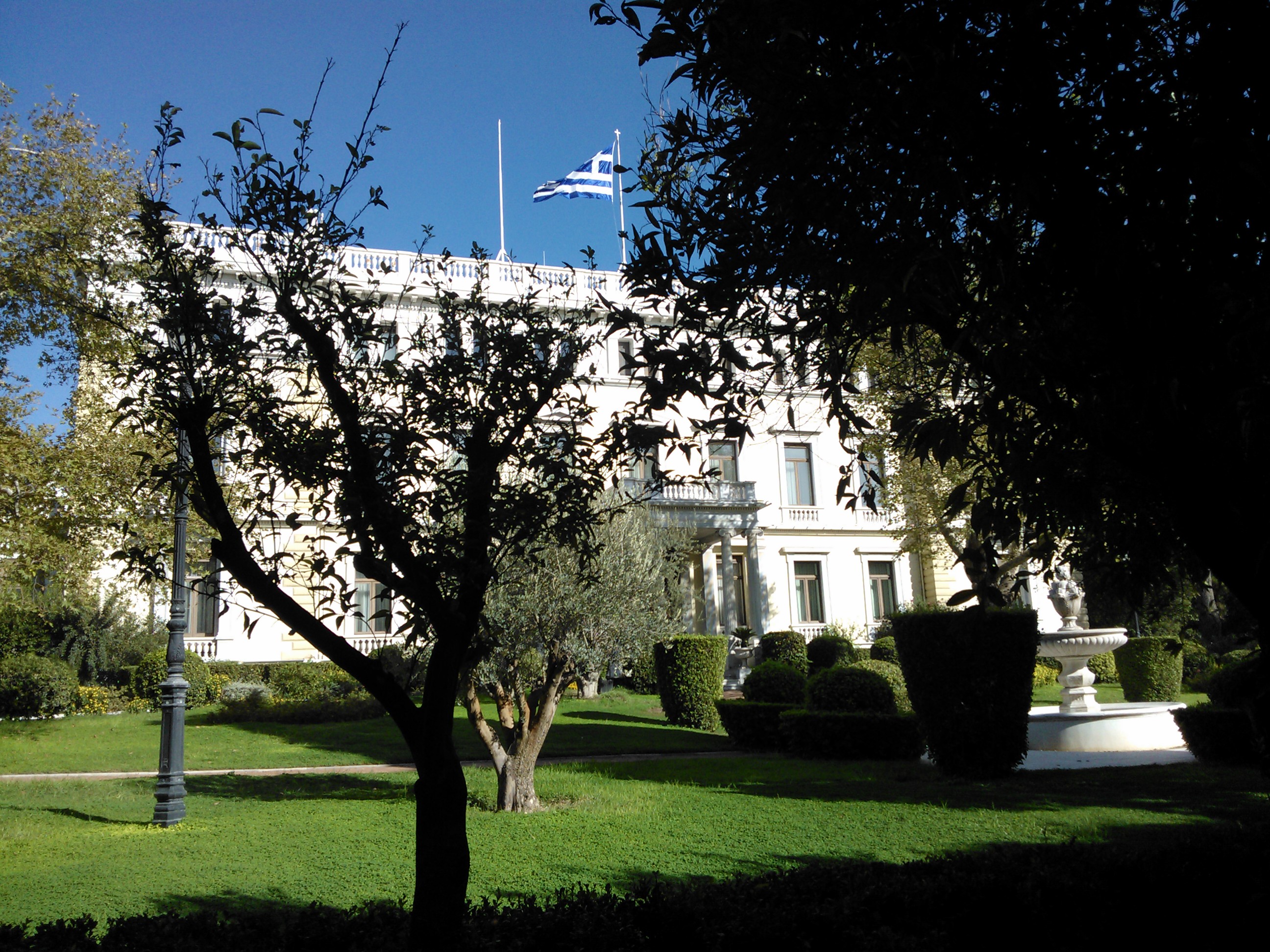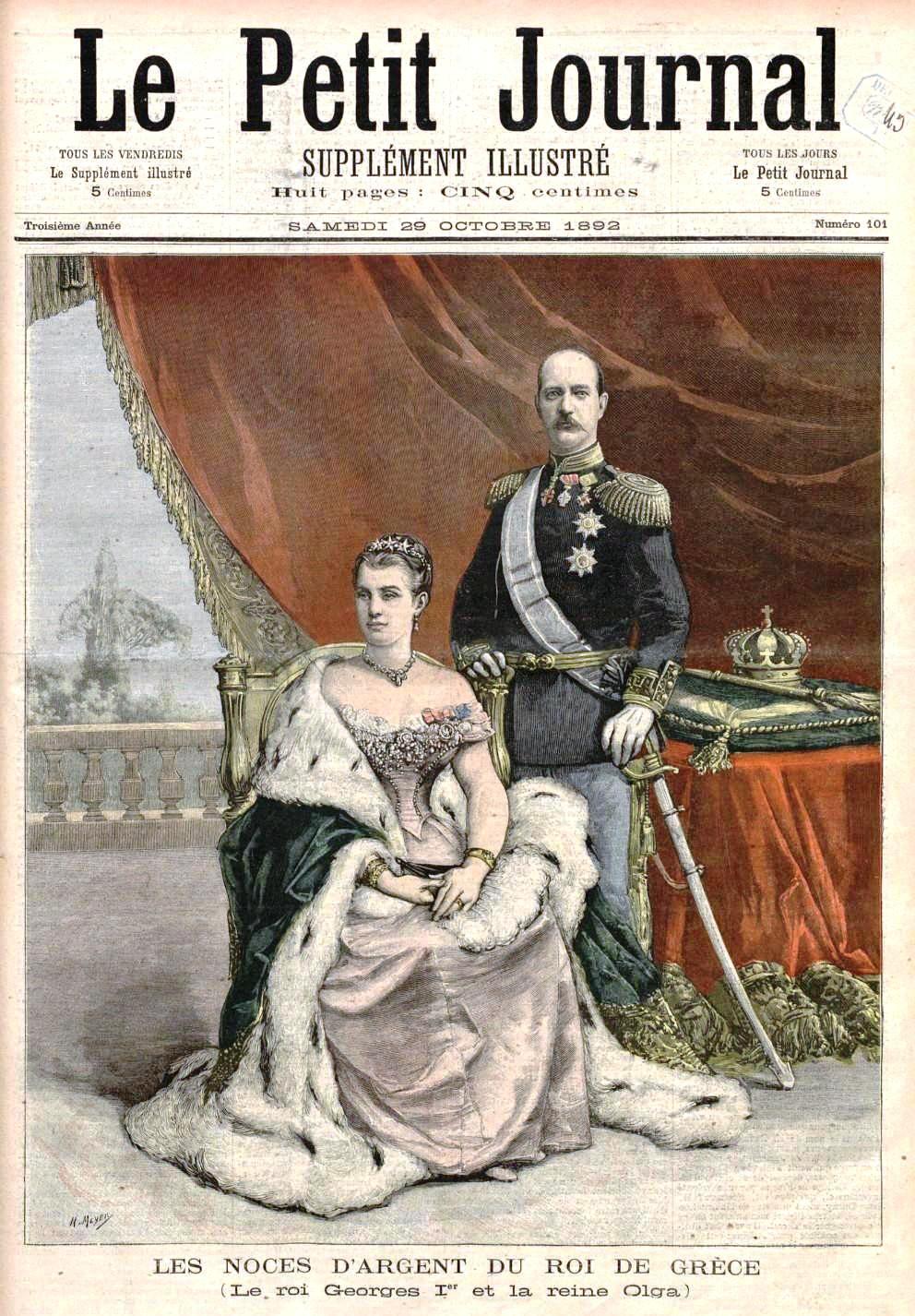|
List Of Regents Of Greece
This is a list of regents ( el, αντιβασιλείς, sing. αντιβασιλεύς) in the modern Kingdom of Greece (1832–1924 and 1936–1974). A regent, from the Latin ''regens'' "one who reigns", is a person selected to act as head of state (ruling or not) because the ruler is a minor, not present, or debilitated.The ''Oxford English Dictionary'' defines the term as "A person appointed to administer a State because the Monarch is a minor, is absent or is incapacitated." Reign of Otto Following their marriage in 1836, during Otto's illnesses and absences from the capital, Queen Amalia undertook the duties of a regent. Reign of George I Reign of Alexander First reign of George II Second reign of George II Reign of Paul Reign of Constantine II See also *Regency *List of regents *List of heads of state of Greece *President of Greece *Prime Minister of Greece *Monarchy of Greece Notes and references {{Kingdom of Greece Greece Greece Heads of state of G ... [...More Info...] [...Related Items...] OR: [Wikipedia] [Google] [Baidu] |
Regency (government)
A regent (from Latin : ruling, governing) is a person appointed to govern a state ''pro tempore'' (Latin: 'for the time being') because the monarch is a minor, absent, incapacitated or unable to discharge the powers and duties of the monarchy, or the throne is vacant and the new monarch has not yet been determined. One variation is in the Monarchy of Liechtenstein, where a competent monarch may choose to assign regency to their of-age heir, handing over the majority of their responsibilities to prepare the heir for future succession. The rule of a regent or regents is called a regency. A regent or regency council may be formed ''ad hoc'' or in accordance with a constitutional rule. ''Regent'' is sometimes a formal title granted to a monarch's most trusted advisor or personal assistant. If the regent is holding their position due to their position in the Order of succession, line of succession, the compound term ''prince regent'' is often used; if the regent of a minor is their m ... [...More Info...] [...Related Items...] OR: [Wikipedia] [Google] [Baidu] |
Prince Johann Of Schleswig-Holstein-Sonderburg-Glücksburg
Prince Johann of Schleswig-Holstein-Sonderburg-Glücksburg (5 December 1825 – 27 May 1911) was the ninth of the ten children of Friedrich Wilhelm, Duke of Schleswig-Holstein-Sonderburg-Glücksburg and Princess Louise Caroline of Hesse-Kassel. He was named after his ancestor John II, Duke of Schleswig-Holstein-Sonderburg. Biography As per the wishes of his cousin King Christian VIII, Prince Johann first enlisted in the Prussian military in 1842 and upon his graduation was appointed Second Lieutenant of the 27th Prussian Infantry Regiment in Magdeburg. He studied at the University of Bonn before joining the Dragoon Guards Regiments in Berlin. He participated in the German revolutions of 1848–1849 and the First Schleswig War against Denmark; this conflict of loyalties between Prussia and Denmark prompted him to request exemption from service. He went on to serve in various departments and was promoted to ''Rittmeister'' in 1854. The following year he was appointed Major ''� ... [...More Info...] [...Related Items...] OR: [Wikipedia] [Google] [Baidu] |
Second Hellenic Republic
The Second Hellenic Republic is a modern historiographical term used to refer to the Greek state during a period of republican governance between 1924 and 1935. To its contemporaries it was known officially as the Hellenic Republic ( el, Ἑλληνικὴ Δημοκρατία ) or more commonly as Greece ( el, Ἑλλάς , ''Hellas''). It occupied virtually the coterminous territory of modern Greece (with the exception of the Dodecanese) and bordered Albania, Yugoslavia, Bulgaria, Turkey and the Italian Aegean Islands. The term ''Second Republic'' is used to differentiate it from the First and Third republics. The fall of the monarchy was proclaimed by the country's parliament on 25 March 1924. A relatively small country with a population of 6.2 million in 1928, it covered a total area of . Over its eleven-year history, the Second Republic saw some of the most important historical events in modern Greek history emerge; from Greece's first military dictatorship, to the short-liv ... [...More Info...] [...Related Items...] OR: [Wikipedia] [Google] [Baidu] |
President Of Greece
The president of Greece, officially the President of the Hellenic Republic ( el, Πρόεδρος της Ελληνικής Δημοκρατίας, Próedros tis Ellinikís Dimokratías), commonly referred to in Greek as the President of the Republic ( el, Πρόεδρος της Δημοκρατίας, Próedros tis Dimokratías), is the head of state of Greece. The president is elected by the Hellenic Parliament; the role has been mainly ceremonial since the 1986 constitutional reform. The office was formally established by the Constitution of Greece in 1975, but has antecedents in the Second Hellenic Republic of 1924–1935 and the Greek junta in 1973–1974 which predated the transition to the current Third Hellenic Republic. The incumbent, since 13 March 2020, is Katerina Sakellaropoulou. Powers The president is the nominal commander-in-chief of the Greek Armed Forces and occupies the first place in the country's order of precedence. Although the Greek Constitution of 1 ... [...More Info...] [...Related Items...] OR: [Wikipedia] [Google] [Baidu] |
1924 Greek Republic Referendum
A referendum on becoming a republic was held in Greece on 13 April 1924.Dieter Nohlen & Philip Stöver (2010) ''Elections in Europe: A data handbook'', p830 It followed the catastrophic outcome of the Asia Minor Campaign. As a result of the military defeat, King Constantine I was forced to abdicate (27 September 1922) in favor of his son, King George II. King George himself later went into exile in the Kingdom of Romania, the home of his wife Elisabeth of Romania, while the government debated the fate of the monarchy. Ultimately, a plebiscite was called. This referendum, following the restoration of Constantine I in 1920, reflected the see-saw nature of the Greek electorate and the then-present dominance of the Liberal and Republican Venizelists in Greek politics and abolished the Crown. In the lead up to the referendum, Prime Minister Alexandros Papanastasiou favoured the vote for the Republic, while Venizelos kept a neutral stance. Nonetheless, on 25 March 1924 the Second H ... [...More Info...] [...Related Items...] OR: [Wikipedia] [Google] [Baidu] |
George II Of Greece
George II ( el, Γεώργιος Βʹ, ''Geórgios II''; 19 July Old_Style_and_New_Style_dates">O.S.:_7_July.html" ;"title="Old_Style_and_New_Style_dates.html" ;"title="nowiki/>O.S.:_7_July">Old_Style_and_New_Style_dates.html"_;"title="nowiki/>Old_Style_and_New_Style_dates">O.S.:_7_July1890_–_1_April_1947)_was_O.S.:_7_July">Old_Style_and_New_Style_dates.html"_;"title="nowiki/>Old_Style_and_New_Style_dates">O.S.:_7_July1890_–_1_April_1947)_was_List_of_kings_of_Greece">King_of_Greece_from_September_1922_to_March_1924_and_from_November_1935_to_his_death_in_April_1947. The_eldest_son_of_King_Constantine_I_of_Greece.html" "title="List_of_kings_of_Greece.html" "title="Old Style and New Style dates">O.S.: 7 July">Old_Style_and_New_Style_dates.html" ;"title="nowiki/>Old Style and New Style dates">O.S.: 7 July1890 – 1 April 1947) was List of kings of Greece">King of Greece from September 1922 to March 1924 and from November 1935 to his death in April 1947. The eldest son of Kin ... [...More Info...] [...Related Items...] OR: [Wikipedia] [Google] [Baidu] |
Olga Constantinovna Of Russia
Olga Constantinovna of Russia ( el, Όλγα; 18 June 1926) was queen consort of Greece as the wife of King George I. She was briefly the regent of Greece in 1920. A member of the Romanov dynasty, she was the oldest daughter of Grand Duke Constantine Nikolaievich and his wife, Princess Alexandra of Saxe-Altenburg. She spent her childhood in Saint Petersburg, Poland, and the Crimea, and married King George I of Greece in 1867 at the age of sixteen. At first, she felt ill at ease in the Kingdom of Greece, but she quickly became involved in social and charitable work. She founded hospitals and schools, but her attempt to promote a new, more accessible, Greek translation of the Gospels sparked riots by religious conservatives. On the assassination of her husband in 1913, Olga returned to Russia. When the First World War broke out, she set up a military hospital in Pavlovsk Palace, which belonged to her brother. She was trapped in the palace after the Russian Revolution of 1917, ... [...More Info...] [...Related Items...] OR: [Wikipedia] [Google] [Baidu] |
Constantine I Of Greece
Constantine I ( el, Κωνσταντίνος Αʹ, ''Konstantínos I''; – 11 January 1923) was King of Greece from 18 March 1913 to 11 June 1917 and from 19 December 1920 to 27 September 1922. He was commander-in-chief of the Hellenic Army during the unsuccessful Greco-Turkish War of 1897 and led the Greek forces during the successful Balkan Wars of 1912–1913, in which Greece expanded to include Thessaloniki, doubling in area and population. He succeeded to the throne of Greece on 18 March 1913, following his father's assassination. Constantine’s disagreement with Eleftherios Venizelos over whether Greece should enter World War I led to the National Schism. He forced Venizelos to resign twice, but in 1917 he left Greece, after threats by the Entente forces to bombard Athens; his second son, Alexander, became king. After Alexander's death, Venizelos' defeat in the 1920 legislative elections, and a plebiscite in favor of his return, Constantine was reinstated. He abd ... [...More Info...] [...Related Items...] OR: [Wikipedia] [Google] [Baidu] |
1920 Greek Referendum
A referendum on the return of King Constantine I was held in Greece on Sunday, 5 December 1920 (22 November o.s.) It followed the death of his son, King Alexander. The proposal was approved by 99.0% of voters.Nohlen & Stöver, p838 The anti-Venizelist parties had recently won the elections of 1920. However the referendum is considered rigged by modern Greek historians. The result ensured and affirmed the dominance of the anti-Venizelist camp in the country. Constantine returned, albeit questioned by the supporters of the Liberal Party, while Liberal leader Eleftherios Venizelos maintained his silence, being in voluntary exile abroad. Constantine returned from Venice with the Greek cruiser Georgios Averof. The return of Constantine I Constantine I ( , ; la, Flavius Valerius Constantinus, ; ; 27 February 22 May 337), also known as Constantine the Great, was Roman emperor from AD 306 to 337, the first one to Constantine the Great and Christianity, convert to Christiani ... [...More Info...] [...Related Items...] OR: [Wikipedia] [Google] [Baidu] |
Pavlos Kountouriotis
Pavlos Kountouriotis ( el, Παύλος Κουντουριώτης; 9 April 1855 – 22 August 1935) was a Greek rear admiral during the Balkan Wars, regent, and the first President of the Second Hellenic Republic. In total he served four times as head of the Greek State, the most times in the history of the seat. Early life Pavlos Kountouriotis was born on the island of Hydra to Theodoros Kountouriotis, Consul and Member of the Greek Parliament and Loukia Negreponte. From his father's side he descended from the Kountouriotis, an Arvanite Hydriot family originally from the village of Kountoura, in the Megarid. Pavlos used Arvanitika frequently as well, and his personal secretary wrote about him that whenever he traveled to Hydra he preferred to use only Arvanitika. He was the grandson of Georgios, a shipowner who like many members of his family, participated in the Greek War of Independence and served as Prime Minister of Greece under King Otto. From his mother's side he was ... [...More Info...] [...Related Items...] OR: [Wikipedia] [Google] [Baidu] |




